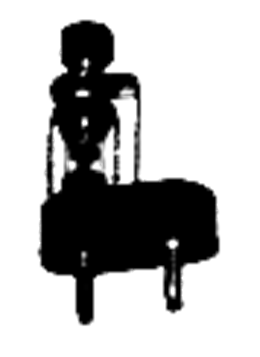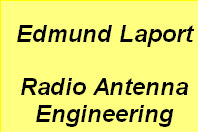


Antentop is FREE e-magazine devoted to Antennas and Amateur Radio an
Special page devoted to
The First Steps (Part- I)

Custom Search
| ANTENTOP- 02- 2004, # 006 |
The
First Steps (Part- I) |
|
|
|
||
|
|
||
|
|
|
|
Vitaliy
tell us a story about beginning and the First Steps of Russian
radio industry |
Vitaly Brousnikin, vitalybr@onego.ru |
|
|
|
||
|
July
28, 1924 can be considered as the starting point of production
of home receiving devices in the USSR. On that day The Soviet
of People's Commissars (The Government) of the USSR passed a decree
"On private receiving radio stations", which gave the
citizens the right to own a radio set. And already in autumn of
1924 the Trust of Low Voltage Factories in Moscow put out the
first industrial home radio receiver - "LDV" (Home Detector
Broadcasting"). It had a fixed tuning to the wave of the
Comintern Radiostation (3200 m). But it did not mean that tuning
was no problem. The radio was based on a crystal detector with
"an active point". The edge of a steel wire was touching
a polycrystal of natural semiconductor. With a small knob the
position of the steel pin could be changed. |
 The crystal DS-4 |
|
|
After
some attempts one could "feel" the detecting p-n-transition
on the border of the "pin-crystal" and the broadcast
was heard in the headphones. No one could move about the room
not to "shake off" the active point. The
author has a similar detector at his disposal and tests showed
that the ratio of direct and opposite resistance at the active
point could reach 1:20. Of course, it is much lower than with
a modern diode , but then it was sufficient for detection of signals
of powerful local R-stations. The
modifications of radio "LDV" are known as "LDV-2"
and "LDV-4". Then followed "LDV-3", "LDV-5"
and "LDV-7" - complicated devices with changeable inductivity
of the coil in 200-1500 m band. The detector receiver "Proletary"
was also very popular. The
first in USSR valve radio was produced at the end of 1924 by the
above-mentioned Trust of Low-Voltage Factories. It was the receiving
set "Radiolina", consisting of several blocks. The first
of them contained a tunable coil with a span of 450-3400 m. The
blocks of detector and RF-Audio amplifiers were connected to it. |
 The first Rrussian vacuum tube was created
in 1915 by M.A.Bonch-Brouyevich, a talented engineer, when he
was Chief of the military telegraphic receiver in Tver. This tube
later nicknamed as the "Babushka" (Grandma) honestly
worked in the receiver of telegraphic signals, successfully compete
with imported French valves |
|
|
|
|
|
|
Page 95 |
||
 |
 |
 |
 |
Just for Fun:

Powered byIP2Location.com
Thanks for your time!
Last Updated:
February 23, 2020 20:22




